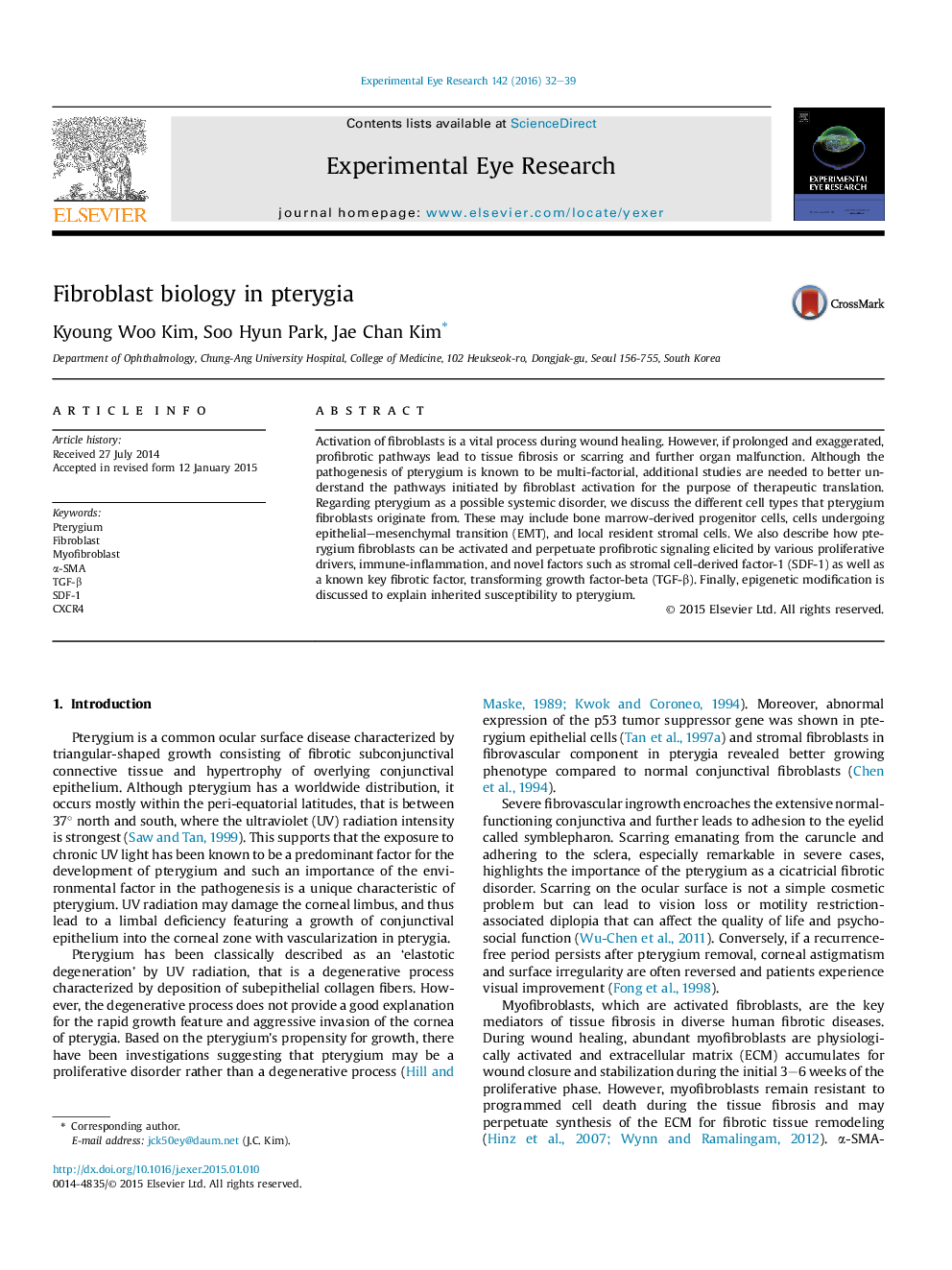| Article ID | Journal | Published Year | Pages | File Type |
|---|---|---|---|---|
| 4011111 | Experimental Eye Research | 2016 | 8 Pages |
•We discuss the different cell types that pterygium fibroblasts originate from.•The important activation mechanisms of pterygium fibroblasts are noted.•Epigenetic modification is an upcoming issue for pterygium pathogenesis.•We highlight future anti-fibrotic strategies against pterygium.
Activation of fibroblasts is a vital process during wound healing. However, if prolonged and exaggerated, profibrotic pathways lead to tissue fibrosis or scarring and further organ malfunction. Although the pathogenesis of pterygium is known to be multi-factorial, additional studies are needed to better understand the pathways initiated by fibroblast activation for the purpose of therapeutic translation. Regarding pterygium as a possible systemic disorder, we discuss the different cell types that pterygium fibroblasts originate from. These may include bone marrow-derived progenitor cells, cells undergoing epithelial–mesenchymal transition (EMT), and local resident stromal cells. We also describe how pterygium fibroblasts can be activated and perpetuate profibrotic signaling elicited by various proliferative drivers, immune-inflammation, and novel factors such as stromal cell-derived factor-1 (SDF-1) as well as a known key fibrotic factor, transforming growth factor-beta (TGF-β). Finally, epigenetic modification is discussed to explain inherited susceptibility to pterygium.
